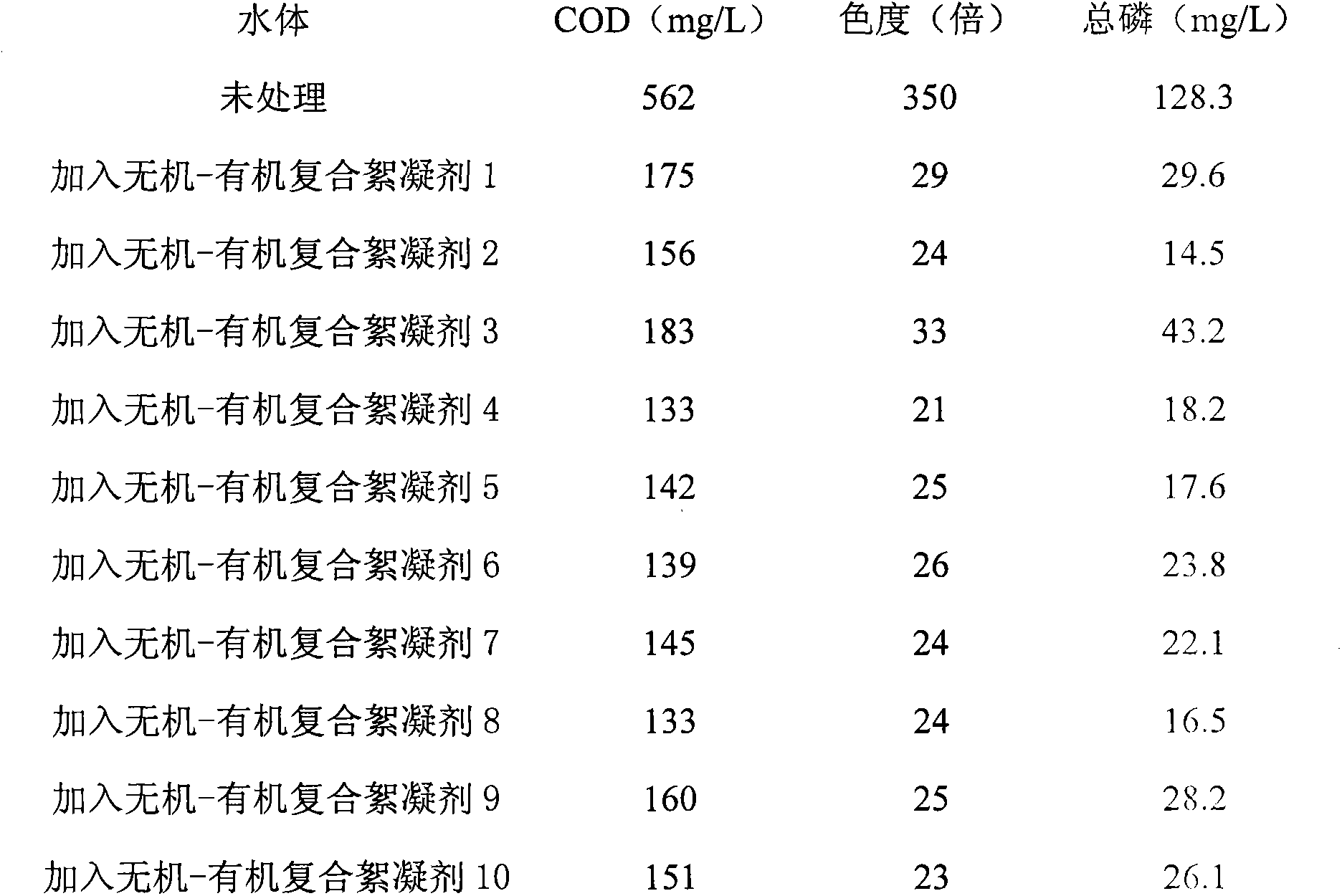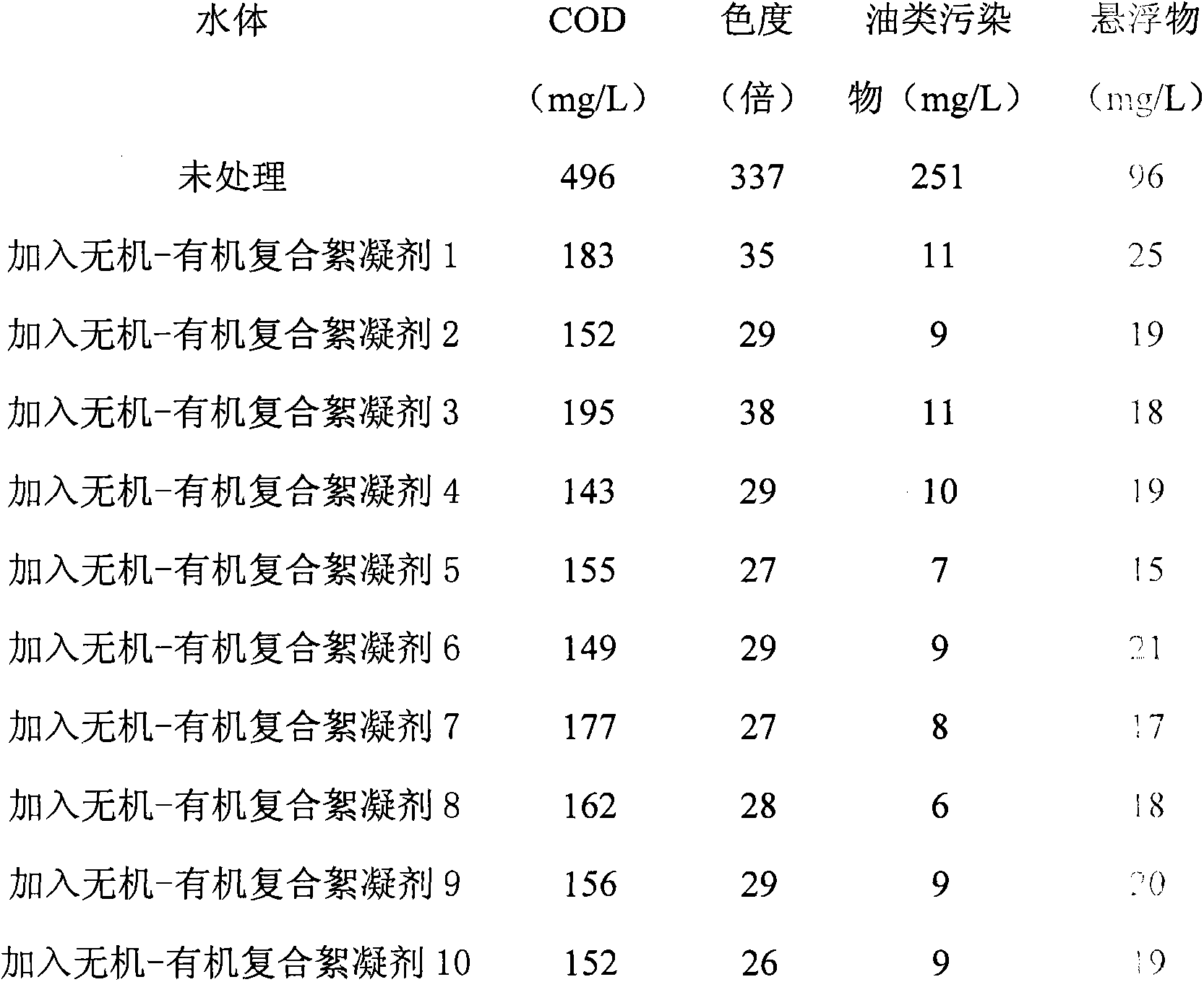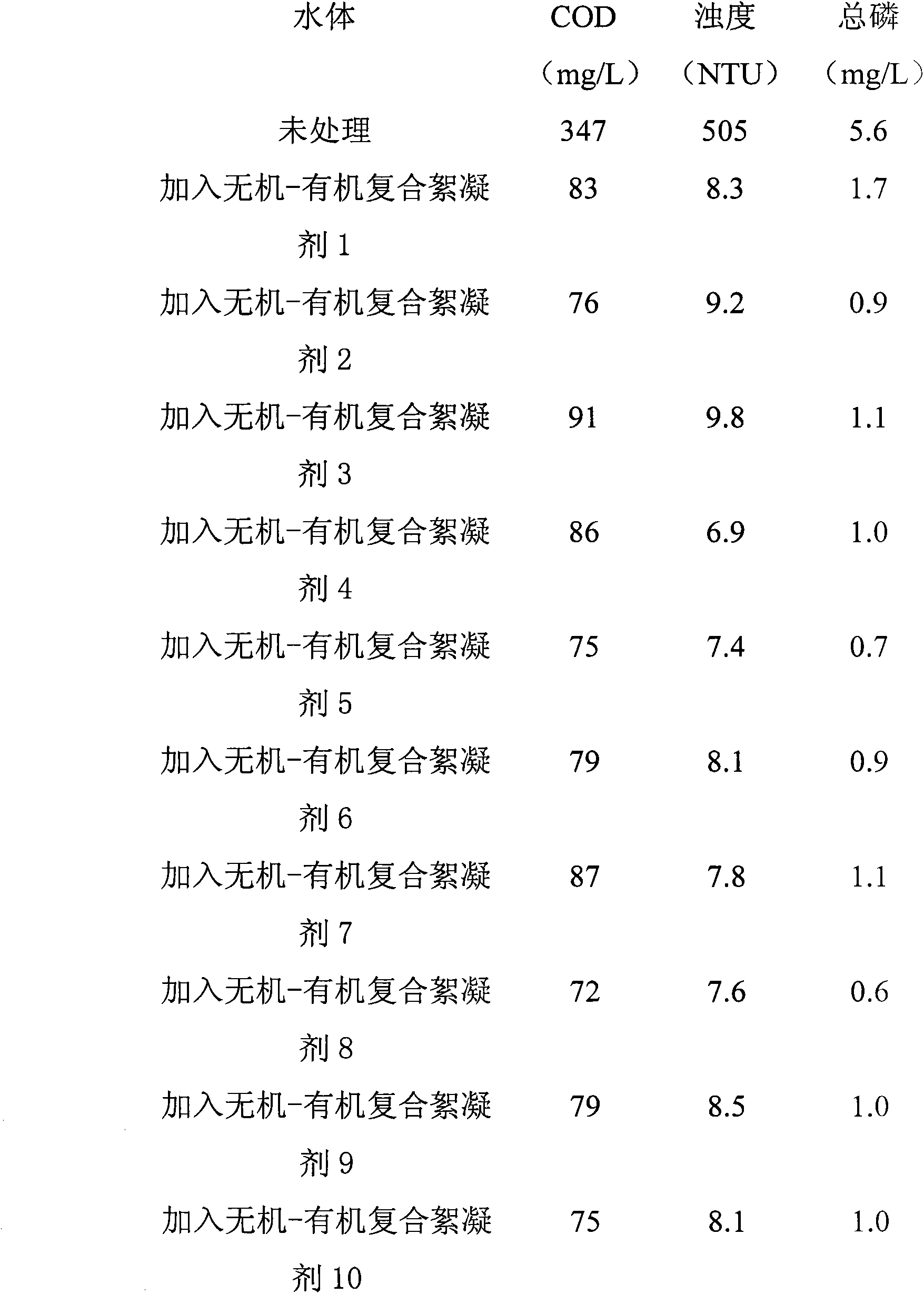Dephosphorization flocculating agent and preparation method thereof
A composite flocculant and inorganic flocculant technology, applied in chemical instruments and methods, flocculation/sedimentation water/sewage treatment, water/sewage treatment, etc., can solve the problem of unsatisfactory dephosphorization effect, small floc structure and flocculation effect. General and other problems, to achieve good dephosphorization effect, low turbidity of effluent, and short settling time
- Summary
- Abstract
- Description
- Claims
- Application Information
AI Technical Summary
Problems solved by technology
Method used
Image
Examples
Embodiment 1
[0035] The preparation of embodiment 1 QCS
[0036] Raw materials: Chitosan (CS, deacetylation degree 85%), Sinopharm Chemical Reagent Co., Ltd.;
[0037] 2,3-Epoxypropyltrimethylammonium chloride (GTA), Beijing Tongguang Fine Chemicals Co., Ltd.; Isopropanol, Shenyang Xinxing Reagent Factory.
[0038] The above reagents were analytically pure
[0039] Experimental procedure: Weigh 30g of GTA powder and place it in a beaker, add isopropanol and deionized water with a volume ratio of 1:1 as solvents (volumes are 200ml and 200ml respectively), dissolve evenly and pour into the container, weigh 40g of CS powder , put it into the container under electric stirring to make the reaction system mix evenly, stop the stirring after 6 hours of constant temperature reaction at 80°C, cool the obtained light yellow viscous product to room temperature, dry it in a vacuum drying oven until the product quality is constant, and then put it into the pulverized Crushed in the machine, sealed fo...
Embodiment 2
[0040] Embodiment 2 Preparation of carboxymethylated modified chitosan
[0041] Raw materials: Chitosan (CS, deacetylation degree 85%), Sinopharm Chemical Reagent Co., Ltd.;
[0042] Chloroacetic acid, Tianjin Jinke Fine Chemical Research Institute; sodium hydroxide, absolute ethanol, Shenyang Xinxing Reagent Factory.
[0043] The above reagents were all analytically pure.
[0044] Experimental procedure: Weigh 50g of sodium hydroxide solid and put it into 200ml of water, add 30g of chitosan and 8g of chloroacetic acid, stir to dissolve, shake well, stir and heat in a water bath at a temperature of 80-90°C for 5 hours, and keep the reaction system always formed. Weakly alkaline. After the reaction is complete, adjust the pH value of the solution to neutral, centrifuge, add three times the volume of ethanol to the filtrate, let it stand for precipitation, filter, and wash repeatedly with ethanol until the solid is light yellow or white. The solid obtained by filtering is dis...
Embodiment 3
[0046] Example 3 Preparation of Cationic Modified Polyacrylamide
[0047] Raw materials: methacryloyloxyethyltrimethylammonium chloride (76% DMC), self-made; acrylamide (AM), Tianjin Kemiou Chemical Reagent Development Center; potassium persulfate and sodium bisulfite, Sinopharm Group Chemical Reagent Co., Ltd.; Sodium Hydroxide, Hydrochloric Acid, Shenyang Xinxing Reagent Factory.
[0048] The above reagents were all analytically pure.
[0049] Experimental procedure: mix 45gDMC solution and 100gAM aqueous solution (concentration by weight is 15%) in proportion, at 50-60 degrees Celsius, adjust the pH value to 5-6, pass the gas for 15min, add the initiator dropwise, continue to pass the gas Nitrogen for 15 minutes. Seal the container and let it stand. Stop after 4 hours to obtain P(DMC-AM).
PUM
 Login to View More
Login to View More Abstract
Description
Claims
Application Information
 Login to View More
Login to View More - R&D
- Intellectual Property
- Life Sciences
- Materials
- Tech Scout
- Unparalleled Data Quality
- Higher Quality Content
- 60% Fewer Hallucinations
Browse by: Latest US Patents, China's latest patents, Technical Efficacy Thesaurus, Application Domain, Technology Topic, Popular Technical Reports.
© 2025 PatSnap. All rights reserved.Legal|Privacy policy|Modern Slavery Act Transparency Statement|Sitemap|About US| Contact US: help@patsnap.com



